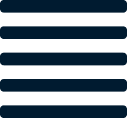In honor of our 7th and last episode of this season’s podcast, we’re highlighting the seven most important things you need to do this year as a supply chain leader of your business.
#1 - If you haven’t already, start the re-shoring/near-shoring process
Oftentimes people think this costs more than overseas manufacturing. And at face value, it might. But what we urge you to think about is the impact lead time reduction and the change in transportation has on your costs.
And if you’re wondering how to calculate this, look no further. The Cost Differential Frontier Calculator is a public tool available to understand the pivot point of cost benefit. The calculator helps answer the question “How much cheaper does a long-lead-time supplier have to be to compensate for the increase in demand-volatility exposure?" Kudos to our colleague, Professor, and Co-Editor in Chief of the Journal of Operations Management, Suzanne de Treville, who made it her objective to make this decision tool available to aid those in the cost analysis of localization.
Speaking of cost, that brings us to our second point…
#2 - Set up your inflation plans
Scenario planning is a great way to test multiple forecast versions. The strongest planning teams will always have a good, better, and best. Have a few versions of what COULD happen so that you’re prepared for the absolute worst
A good number of forecast versions to aim for is at least 3 but if you’re able to do more, then don’t let anyone stop you. And if you’re thinking that’s a lot of work to do - well, it is (without a system of course.) If you’re still operating out of spreadsheets then there are ways to do this without pulling your hair out. Just send us an email and we’d be happy to have one of our in house planning consultants guide you.
#3 - Rethink your safety stock strategy
Do you know what your stock to sales ratio is? In case you need a refresher, this is the monthly ratio that measures the ability of inventory on hand to meet demand. It is calculated as the value of beginning of month inventory / net sales for the month. Depending on your receipt flow, it might make more sense to do average inventory for the month instead of what you started with.
In any case, if you’re wondering what a healthy ratio looks like, ultimately it's what’s best for your business and cash flow. But as a standard, 15-25% is pretty healthy. You essentially want to be as close to zero as possible. Anything over a 1.0 means you have way too much invested in inventory.
So how do you get this down while still maintaining your sales? One way is to really focus on a select few products to target as those you never want to stock out of. This lets you be a little more lean with dollars invested elsewhere. You can look at your safety stock across all products and know that you don't have to have the same amount on hand for everything. You can carry 4 weeks in one item and 8 in another if that’s what makes the most sense for you strategically and financially.
Rethinking this strategy should also consider the location of inventory. For example, you can have a healthy stock to sales ratio for a store that is near a distribution center or has sufficient in store inventory. But a store further away may not have the same numbers due to the logistics of getting inventory there. A thorough analysis should include by location analysis along with a channel and total business rollup.
#4 - Set up an S&OP process
Set up an S&OP process so that the entire business is aligned and you’re spending less time chasing your tail. Episode 1 of this season’s podcast covers this in more detail. In essence, S&OP is an intricate process to align the entire business. It ensures you can meet the needs of your customer in the most profitable way. Check out the episode or our blog post to learn more.
#5 - Work on relationships
Relationships are the key to making change happen. Think about it - if you worked just you, yourself, and you…well you’d be running around in circles. But the right relationships fostered in an authentic way are always going to be your strongest weapon.
We talk more in depth about supplier relationships on our blog and other episodes. But to summarize it all, these relationships are going to be what helps you when it comes to negotiating, prioritizing, pivoting and supporting all of the nuances that go into your supply chain.
And if you’re wondering how you foster these relationships, just put yourself in the supplier’s shoes. What would make you stand out and create a genuine relationship with your supplier? Maybe it’s frequenting them for some face to face quality time. Or maybe it's sending them additional business. (And we know this would mean competition to you on the production line, but what you’ve now become to the supplier is an extended member of their sales team rather than just another client) And frankly, if new clients are what put you behind in the production line, then it's probably not the best supplier for you in the first place…
Retail relationships would essentially work the same way. These may be more local, so if a targeted in person meeting isn’t really your thing, you can also try attending events you know they’ll be present at.
The benefit of these relationships will be long term and sometimes you’ll have to redo the leg work if people leave (which is a more common case in retail than manufacturing) but the right relationship will certainly come in handy when you’re looking for more sales channels, or trying to offload some inventory.
And lastly we mentioned relationships with your team. These are just as important. Operations touches all aspects of the business, hence the last point on the importance of S&OP. But regardless of whether it's through that process or on a one off basis, these relationships with your team are what will make you more successful in the long run.
Relationships take time and need to be consistently cared for otherwise you’re going to look like someone who only reaches out when they need something - and that’s just not a good look for anyone.
#6 - Analyze, assess, and repeat
We pulled this tip out of the S&OP process but it really warrants being its own tip because this applies to everything outside of that process. This applies to your forecasting, leadership, day to day, the list goes on. With the roller coaster that is planning, remember to take moments to pause and AAR (Analyze, Assess, Repeat!)
#7 - Do a systems audit
Think being able to do everything in a spreadsheet makes you a strong leader? Think again. It actually makes you a stronger leader if you recognize systems are resources just like people, and often you can get more out investing in the right systems and helping alleviate some burden from your team. And of course, planning and supply chain don’t work in silos so whatever you consider will need to work with the other systems your business uses if you plan on keeping them around. You can also present strong recommendations to the leadership team if it makes sense to consolidate systems.
In any case, thinking big picture will always signify your strength as a leader. Regardless of what position you’re actually in, tapping into these tips can help set you apart and on your way to a successful rest of your year.
If you’d like to learn more about how we can help with ANY of these tips, email us at hello@fuseinventory.com. We’d look forward to it.
.png)

.png)









.png)



%20hover.png)
.png)
hover.png)







Let us know what you think about this post
Put your comment below.